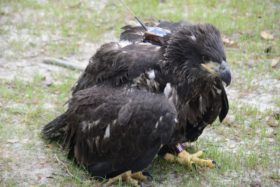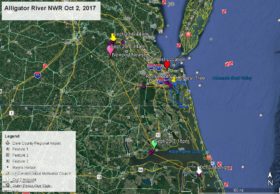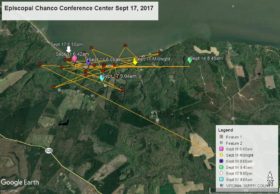Insulation
Azalea Leaves Mattamuskeet NWR
February 9, 2010Azalea Returns to Alligator River NWR
February 12, 2010

Usually when we think of insulation we relate it to how much we need in the ceiling and walls of our homes to keep us warm in winter and cool in summer. Perhaps how many layers we need to wear to keep us warm in weather like we have been having for the past few weeks. But, insulation is absolutely essential to the survival of a bird. Look at the 2 photos taken during the brief snow this morning at Norfolk Botanical Garden. In a matter of minutes, the female bald eagle became covered with snow. How, can this happen when she has a body temperature of 105 degrees F? Insulation!!
Feathers are the most unique and distinctive feature of a bird. Feathers also provide insulation essential for the thermal relations with its environment and controlling body temperature. Insulation is one of the important variables affecting the rate of heat loss. Insulation increases with the amount of plumage, and most birds molt in new feathers in preparation for cold weather. Bird feathers are among the best natural lightweight insulations. The outer coat of feathers we see, called contour feathers, contribute to the birds insulation, but it is the feathers underneath, called down, that are of primary importance and the most effective insulators.




4 Comments
Thanks for the info, folks will really enjoy being educated on this, all are so worried about the eagles. Makes sense!!!
Great Info Reese! Thank you! Two Questions. When the eagles spread their brood patch is that so their body heat can get through the insulation to the eggs? When an eagle lays on snow in a nest does their body heat melt the snow or do they have to clear it away manually? Thanks Reese!!
Dana – I explain the purpose of the brood patch in my post on Feb 2 – sole purpose is to brood eggs.
Given time their body heat will melt the snow, but because they are so well insulated it takes a long time. We saw that with the NBG eagles. Took 3 days to melt snow under eagles in the nest.
Hi Reese – Did Norfolk escape the worst of the blizzard? I presume so since it hasn’t been mentioned.